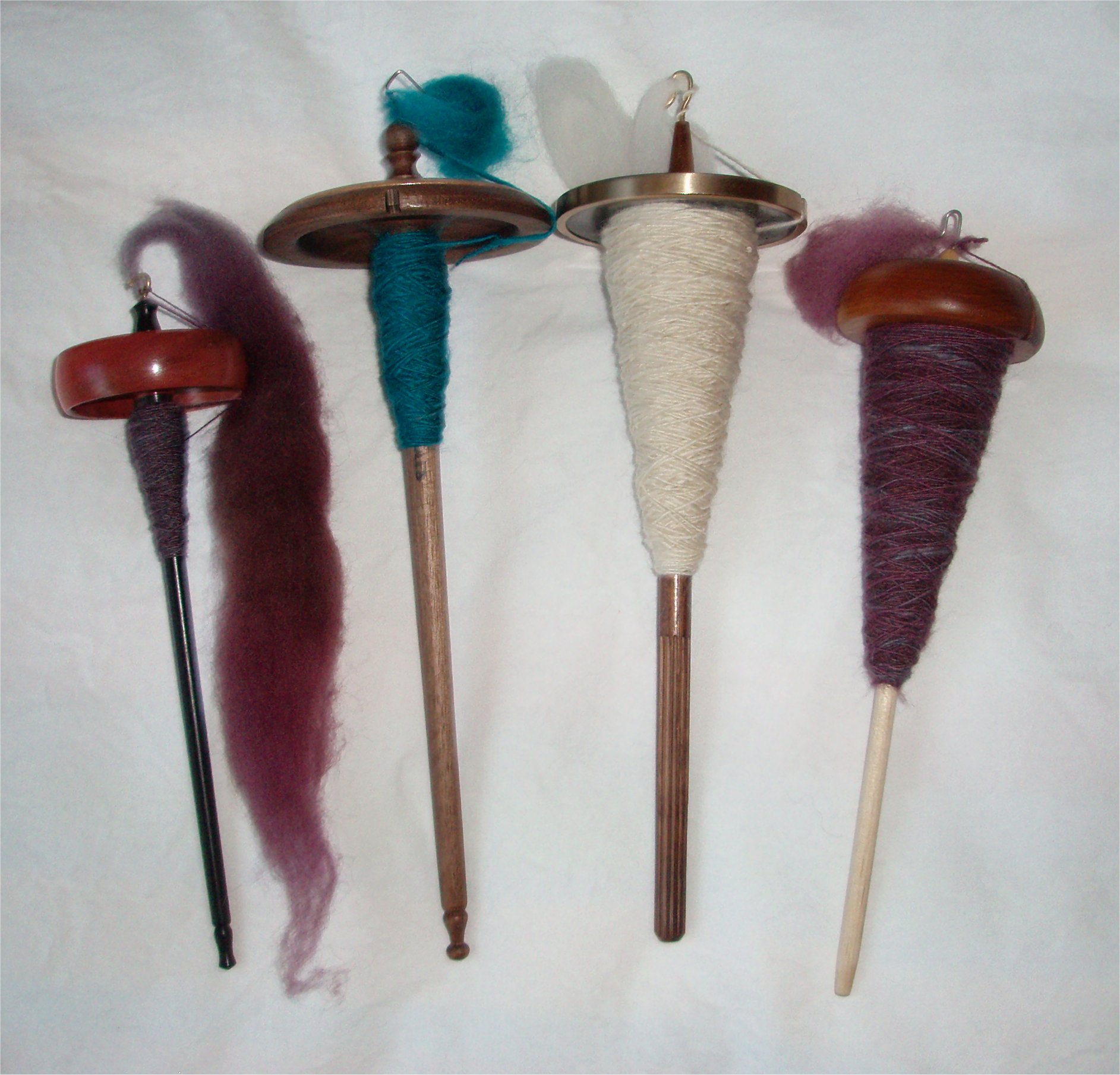Welcome to Tutorial Tuesday! Today we are talking about Spinning with a Spindle.
I recently asked for and received a spindle and some fiber through the Random Acts of Kindness group in Ravelry. I am still totally amazed at folks' generosity on Ravelry. We have some of the best people in the world. I'm going to use some of my own spun fiber for hexipuffs for my OWL project, HHH-HufflepuffHexipuffHexipox.
To get started there are a few kinds of spindles. There's drop spindles, Turkish spindles, and supported spindles. The whorl is the weight on a drop spindle and the yarn gets wrapped under the whorl, for top whorl spindles, or above the whorl for bottom whorl spindles. Turkish spindles have four arms that the yarn gets wrapped around, in an over two under one fashion. Supported spindles are best for spinning cobweb and lace weight yarns.
Pictures are always nice, so here's some modern top whorl spindles, courtesy of Wikipedia.
A Turkish spindle,
Spun yarn has either a S or Z twist, and is plied in the opposite direction than it is spun to make more uniform and thicker yarns. The twists appear as such,
Katniss of Hufflepuff helped me understand more about the process of spinning to completed 2-ply yarn.
- Spin the singles.
- Wind a ball with approximately half the yarn from the spindle.
- Wind the two singles into a plying ball with the two strands working as one in a regular ball.
- "There’s also the possibility to use a center pull ball - which I don’t recommend although it works great for some spinners. The thing is, that the ball might collapse on itself near the end of your plying process, leaving you with a huge tangled mess (depending on how much twist you put in, how fine your yarn is, etc)." ~ Katniss
- Using the ball from step 3, spin in opposite direction than the singles were spun. If you have extra left over in one strand you can use a plying bracelet.
- Wind yarn into a skein and tie it in 4 or 5 places.
- Soak the yarn in water for 30 minutes or so, if hot, don't agitate! You'll get felted yarn. :)
- Rinse in lukewarm water and then drain. Wrap skein in towel and press out the water by standing on the towel.
- Whack, snap, or somehow beat your yarn to distribute twist and fluff the yarn a little.
- Hang the skein to dry. If you block it, then the knitted item will look different than you expect it to as you've been working with blocked yarn. If you want to block it, place a weight on the skein.
- Twist the skein to store it. Pictures may be worth a thousand words, but videos are exponentially better.
To turn in for a class, Marushka has been, "I have been reporting the yards like this: 250 yards of 3-ply yarn (250x3=750 yards of spinning)" to help reduce confusion related to spinning structure.
To record for future reference, both kazpatch and gardeniapatti, use the following set up on a 3 by 5 index card.
Also, kazpatch is using this format to turn in spun yarn for classes as a help for other spinners, and to help create a tracking method for the amount of yarn resulting from a set amount of fiber.
Fibre: Type - Merino natural gray, (source - Kathy’s Fibres)
Spun: Trindle and Plied : Majacraft SuziePro
Amount: Approx 50gms into 64 yds of DK-WW in a 2 ply, 128yds of singles (WPI if calculated)
As we like Harry Potter, I thought closing the Tuesday Tutorial with a bit of wiki magic on the myths around spinning would be fun.
Some myths about spinning include, many goddesses, including the Germanic Holda, Norse Frigg and Freya, Isis, Artemis and Athena. It is often connected with fate, as the Greek Fates and the Norse Norns work with yarns that represent lives. Because the spinning wheel was not in common use before the 16th century in Europe, the older stories are certainly referring to hand spinning done on a spindle. Chief among these is the french fairy tale The Sleeping Beauty, where the princess is erroneously shown to prick her hand on some part of a spinning wheel in modern illustrations, rather than a spindle. (Wikipedia)
Have fun spinning and organizing your yarns!





No comments:
Post a Comment